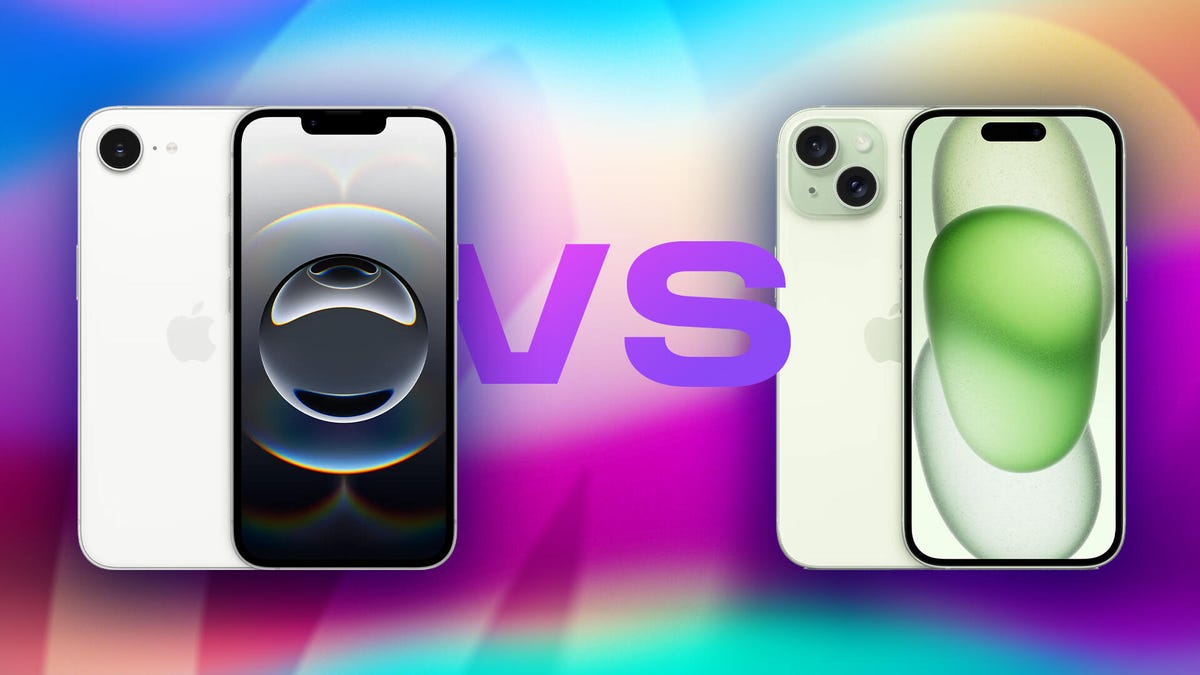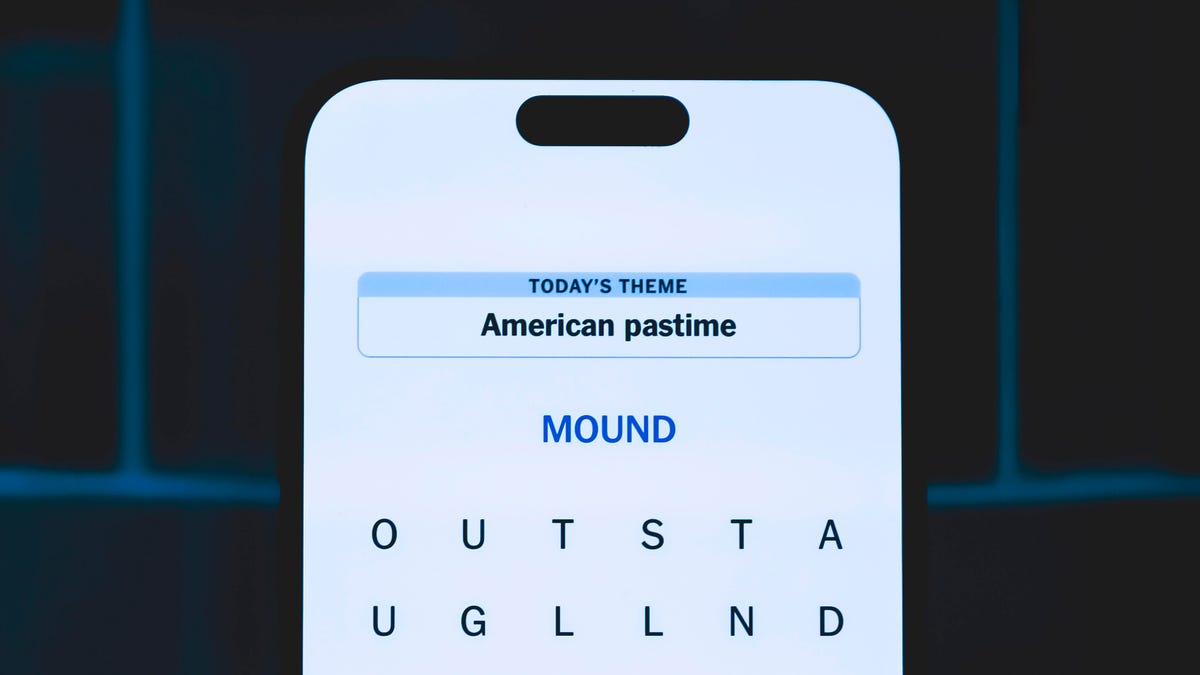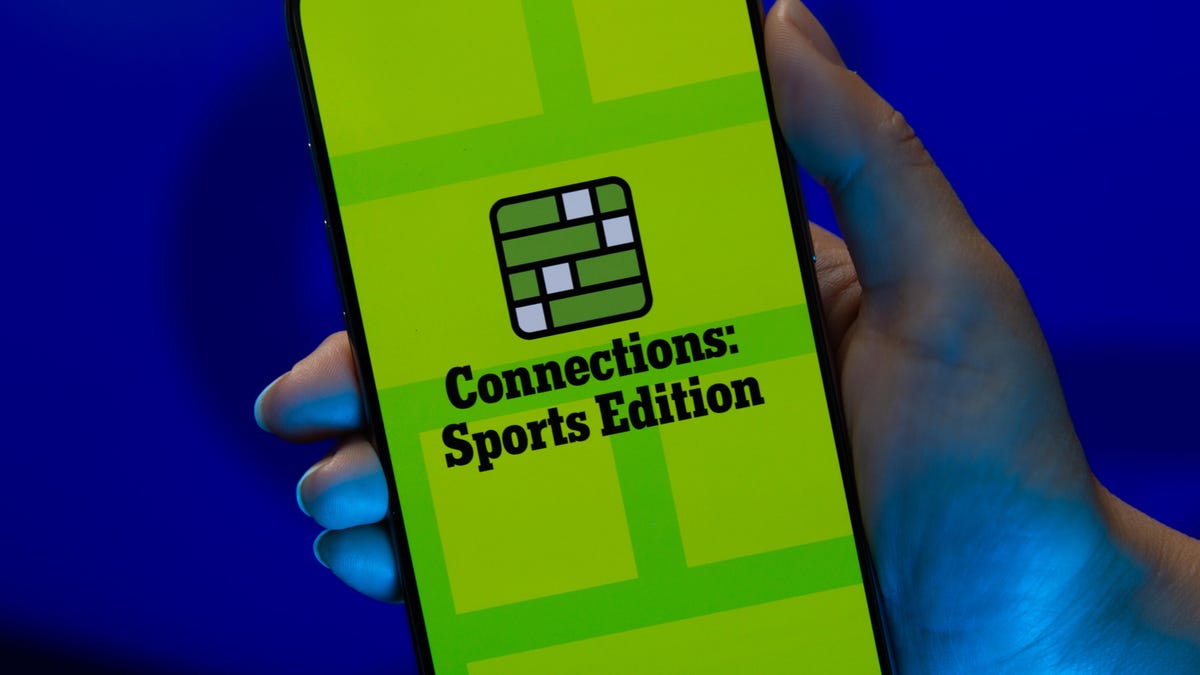Technologies
Apple iPhone 16E vs. iPhone 15: Which Cheaper iPhone is Best For You?
The iPhone 16E and the iPhone 15 are both capable devices that cost less than a $799 iPhone 16, but each comes with different compromises.

Apple’s $599 iPhone 16E is the company’s latest entry-level handset, positioning itself as the most affordable way to get Apple Intelligence and other features seen in the $799 iPhone 16. But considering that it replaced the $429 iPhone SE, you could hardly call the iPhone 16E cheap with its higher starting price. If you’re hoping to save some money, there might be another option: Apple’s older, but still quite capable, iPhone 15. Sure, it was released in 2023, but depending on your priorities, it could be a compelling alternative. The iPhone 15 currently retails for $699, but it can be easily found on the secondary market for a lower price.
Of course, as the iPhone 16E is the newer model, it’ll have newer features such as the latest A18 chip and compatibility with Apple Intelligence, which introduces generative emoji, smarter notifications and (eventually) an improved Siri. But in some areas, like the cameras and charging capabilities, the older iPhone 15 edges it out. And those fundamentals might be more important to you than Apple’s developing AI features.
To help you decide, we’ve outlined a few key differences between the two.
Processor
The iPhone 16E ships with Apple’s latest A18 chip, which is also in the $799 iPhone 16. This gives it a touch more power and speed than the iPhone 15, which only has the much older A16 Bionic first seen in the iPhone 14 Pro. That newer A18 processor allows the iPhone 16E to run more graphically intensive games, such as the Resident Evil 4 Remake as well as Apple Intelligence tools and features. The A16 Bionic is still a fast chip that runs nearly every other app in Apple’s App Store, but the A18 chip will likely receive software and new feature updates for longer.
Apple Intelligence
One of the more impressive features of the iPhone 16E is that it supports Apple Intelligence, which was previously only available on iPhone 15 Pro and the iPhone 16. In addition to providing the smarter Siri planned for a future update, Apple Intelligence offers writing tools and a Clean Up tool that removes unwanted elements from photos. The iPhone 15, on the other hand, doesn’t support Apple Intelligence despite its higher price tag.
While you cannot access Apple’s new AI features on the iPhone 15, you can use other services like ChatGPT and Gemini by downloading apps that include those AI platforms. They’ll just run entirely in the cloud instead of on-device.
Cameras: One vs. two
The iPhone 16E and the iPhone 15 both have 48-megapixel cameras on the rear and a 12-megapixel camera on the front. The big difference, however, is that the iPhone 15 has a secondary 12-megapixel ultrawide camera. Instead of relying on a second camera for its wide shots, the iPhone 16E uses sensor cropping for better zoomed-in shots.
Battery and charging
Apple claims that the iPhone 16E can play video for up to 26 hours (21 hours streamed), while the iPhone 15 supposedly has up to 20 hours of video playback (16 hours streamed). The iPhone 16E apparently has a longer battery life due to a new power-efficient 5G modem called the C1.
However, a huge downside of the iPhone 16E is that it doesn’t support MagSafe wireless charging. It is only compatible with Qi wireless charging capped at 7.5W. The iPhone 15, on the other hand, supports 15W MagSafe charging, which means it can wirelessly charge at twice the speed. The iPhone 15 also natively supports all kinds of magnetic phone accessories like wallets and stands, while a third-party case will be needed to use these with the iPhone 16E.
Both phones support USB-C fast charging up to 20W.
A note on pricing and buying refurbished
While the iPhone 15 retails for $100 more than the iPhone 16E, you can buy it refurbished at comparable or even lower prices depending on the store. For example, at the time of this writing, you can purchase a «renewed» 128GB iPhone 15 from Amazon for roughly $500 to $530, which is nearly $100 less than the iPhone 16E’s starting price. But as is the case with buying anything in the secondary market, be aware that the phone might not be in tip-top shape when you get it. Additionally, warranties vary from store to store, so be sure to read the store policies.
Apple iPhone 16E vs. Apple iPhone 15
| Apple iPhone 16E | iPhone 15 | |
|---|---|---|
| Display size, resolution | 6.1-inch OLED display; 2,532×1,170 pixels; 60Hz refresh rate | 6.1-inch OLED; 2,556×1,179 pixels; 60Hz refresh rate |
| Pixel density | 460 ppi | 460 ppi |
| Dimensions (inches) | 5.78 x 2.82 x 0.31 in. | 5.78 x 2.82 x 0.31 in. |
| Dimensions (millimeters) | 146.7 x 71.5 x 7.8 mm | 147.6 x 71.6 x 7.8 mm |
| Weight (ounces, grams) | 167g (5.88 oz.) | 171 g (6.02 oz.) |
| Mobile software | iOS 18 | iOS 18 |
| Camera | 48-megapixel (wide) | 48-megapixel (wide), 12-megapixel (ultrawide) |
| Front-facing camera | 12-megapixel | 12-megapixel |
| Video capture | 4K | 4K |
| Processor | Apple A18 | A16 Bionic |
| RAM/Storage | RAM unknown + 128GB, 256GB, 512GB | 128GB, 256GB, 512GB |
| Expandable storage | None | None |
| Battery/Charger | Up to 26 hours video playback, 21 hours streamed video playback, 90 hours of audio playback. 20W wired charging, 7.5W Qi wireless charging | Undisclosed; Apple claims up to 20 hours of video playback (16 hours streamed). 20W wired charging, 15W MagSafe wireless charging |
| Fingerprint sensor | No, Face ID | No, Face ID |
| Connector | USB-C | USB-C |
| Headphone jack | None | None |
| Special features | Action button, Apple C1 5G modem, Apple Intelligence, Ceramic Shield, Emergency SOS, satellite connectivity, IP68 resistance | 5G (mmw/Sub6), IP68 rating, MagSafe, Dynamic Island |
| Price off-contract (USD) | $599 (128GB), $699 (256GB), $899 (512GB) | $699 (128GB), $799 (256GB), $999 (512GB) |
| Price (GBP) | £599 (128GB), £699 (256GB), £899 (512GB) | £699 (128GB), £799 (256GB), £999 (512GB) |
| Price (AUD) | AU$999 (128GB), AU$1,199 (256GB), AU$1,549 (512GB) | AU$1,249 (128GB), AU$1,449 (256GB), AU$1,799 (512GB) |
Technologies
Be Wary of AI Videos as Hurricane Melissa Hits Jamaica. How to Spot a Fake
AI-generated storm videos are spreading rapidly online. Here’s where to find reliable information.

As Category 5 Hurricane Melissa bears down on Jamaica with winds topping 180 mph, social media is being hit by a surge of AI-generated and misleading videos, showing catastrophic flooding, collapsing buildings and rescue scenes that never happened.
Across X, TikTok, Instagram, WhatsApp and other social media platforms, fake clips spread quickly, racking up millions of views in hours. Many of these videos are spliced footage from past storms or clips created entirely with text-to-video AI tools.
In times of crisis, like a dangerous and imminent natural disaster, these fake videos can create confusion, panic and distraction at a time when accuracy can be life-saving.
Natural disasters have always bred rumors and recycled footage, but the rise of AI-generated video has supercharged the problem. Tools like OpenAI’s Sora and other AI-video platforms can render realistic-looking images of storms, floods and damage scenes in seconds, reaching millions online in just a few hours.
Read also: The Deepfakes Are Winning. How Can You Tell if a Video Is Real or Sora AI?
Don’t miss any of our unbiased tech content and lab-based reviews. Add CNET as a preferred Google source.
Why storms are a magnet for fake news
Storms are visual, emotional and fast-moving, which is the perfect recipe for viral misinformation. In years past, videos were often taken out of context or labeled as a different storm. Now, they can be digitally fabricated from scratch.
Some depict apocalyptic flooding that hasn’t occurred, while others claim to show «real-time» conditions hours before landfall. Several videos that have circled this week include images of sharks swimming in the storm surge and unsettling depictions of human suffering.
False videos like these can exaggerate the danger of the storm, create panic, undermine trust and distract emergency responders, as misinformation pulls attention from verified reports.
The following three videos are all fake. They are labeled (albeit briefly) with the Sora watermark, which indicates they were made in OpenAI’s video generator.
How to separate truth from fiction online
When social feeds fill with dramatic hurricane clips, it’s important to separate truth from fiction.
«You have to be very discerning,» Senator Dana Morris Dixon, Jamaica’s information minister, said. «You have to know what is good information from bad information. If you want to know where the storm is going, if you want to know what to do, you need to look for official sources.»
Dixon highlighted that the Jamaica Information Service, Office of Disaster Preparedness and Emergency Management’s information sites and the Office of the Prime Minister page are resources for legitimate, timely updates.
Here are some ways to be discerning.
Check the source. If the video comes from an unfamiliar account, lacks a timestamp or carries no recognizable media branding, assume it is fake until verified. Also, look for the Sora watermark indicating it was made in OpenAI’s app, or read the comments to see if someone else has flagged the video as fake.
Ask yourself if it’s new and local. Does the geography match Jamaica? Is the footage recent? Many «Melissa» clips could actually be from past Caribbean or Gulf storms.
Cross-check before believing. Confirm through trusted outlets, like the Meteorological Service of Jamaica and the US National Hurricane Center, or established media like the BBC, Reuters or the Associated Press.
Pause before sharing. A viral video can cause harm if it spreads misinformation. Wait until a credible source verifies it before reposting.
Go local. If you’re in the affected area, rely on local emergency agencies, radio stations and city or county-level officials for evacuation and safety updates.
Monitor official alerts. For real-time instructions, stick with government channels and local emergency feeds. Your safety depends on accurate information, not viral content.
As AI-generated media becomes easier to produce, hurricanes like Melissa offer a preview of a new reality: one in which you can’t trust much of the information you see online.
Staying safe means being skeptical and diligent when looking for accurate and even lifesaving news.
Read also: What Is AI Slop? Everything to Know About the Terrible Content Taking Over the Internet
Technologies
Today’s NYT Strands Hints, Answers and Help for Oct. 29 #605
Here are hints and answers for the NYT Strands puzzle for Oct. 29, No. 605.

Looking for the most recent Strands answer? Click here for our daily Strands hints, as well as our daily answers and hints for The New York Times Mini Crossword, Wordle, Connections and Connections: Sports Edition puzzles.
Today’s NYT Strands puzzle is a fun one for English majors. Some of the answers are a bit tough to unscramble, so if you need hints and answers, read on.
I go into depth about the rules for Strands in this story.
If you’re looking for today’s Wordle, Connections and Mini Crossword answers, you can visit CNET’s NYT puzzle hints page.
Read more: NYT Connections Turns 1: These Are the 5 Toughest Puzzles So Far
Hint for today’s Strands puzzle
Today’s Strands theme is: «Nevermore!»
If that doesn’t help you, here’s a clue: Poem by Edgar Allen Poe.
Clue words to unlock in-game hints
Your goal is to find hidden words that fit the puzzle’s theme. If you’re stuck, find any words you can. Every time you find three words of four letters or more, Strands will reveal one of the theme words. These are the words I used to get those hints but any words of four or more letters that you find will work:
- MOVE, RAVE, NOVEL, BACK, LACK, HACK, FEAT, HEAT, WING, SORE, ROSE, STAR, RATS
Answers for today’s Strands puzzle
These are the answers that tie into the theme. The goal of the puzzle is to find them all, including the spangram, a theme word that reaches from one side of the puzzle to the other. When you have all of them (I originally thought there were always eight but learned that the number can vary), every letter on the board will be used. Here are the nonspangram answers:
- BLACK, CLEVER, WINGED, FEATHERED, OMNIVOROUS
Today’s Strands spangram
Today’s Strands spangram is THATSSORAVEN. To find it, look for the T that’s six letters down on the far-left vertical row, and wind across.
Technologies
Today’s NYT Connections: Sports Edition Hints and Answers for Oct. 29, #401
Here are hints and the answers for the NYT Connections: Sports Edition puzzle for Oct. 29, No. 401.

Looking for the most recent regular Connections answers? Click here for today’s Connections hints, as well as our daily answers and hints for The New York Times Mini Crossword, Wordle and Strands puzzles.
Today’s Connections: Sports Edition is a fun one. As a Vikings and Seahawks fan, I spotted two nicknames for parts of those teams right away. Of course, the purple category is its typically loopy self. If you’re struggling but still want to solve it, read on for hints and the answers.
Connections: Sports Edition is published by The Athletic, the subscription-based sports journalism site owned by The Times. It doesn’t show up in the NYT Games app but appears in The Athletic’s own app. Or you can play it for free online.
Read more: NYT Connections: Sports Edition Puzzle Comes Out of Beta
Hints for today’s Connections: Sports Edition groups
Here are four hints for the groupings in today’s Connections: Sports Edition puzzle, ranked from the easiest yellow group to the tough (and sometimes bizarre) purple group.
Yellow group hint: Buy me some Cracker Jack.
Green group hint: Hoops homes.
Blue group hint: Like the Monsters of the Midway.
Purple group hint: Football teams, with a twist.
Answers for today’s Connections: Sports Edition groups
Yellow group: Things a stadium vendor sells.
Green group: NBA arenas.
Blue group: Famous nicknames for NFL defenses.
Purple group: NFL teams, with the second-to-last letter changed.
Read more: Wordle Cheat Sheet: Here Are the Most Popular Letters Used in English Words
What are today’s Connections: Sports Edition answers?
The yellow words in today’s Connections
The theme is things a stadium vendor sells. The four answers are beer, cotton candy, hot dogs and peanuts.
The green words in today’s Connections
The theme is NBA arenas. The four answers are Barclays, Little Caesars, Smoothie King and United.
The blue words in today’s Connections
The theme is famous nicknames for NFL defenses. The four answers are Legion of Boom, Orange Crush, Purple People Eaters and Steel Curtain.
The purple words in today’s Connections
The theme is NFL teams, with the second-to-last letter changed. The four answers are beads (Bears), biles (Bills), colas (Colts) and packets (Packers).
-

 Technologies3 года ago
Technologies3 года agoTech Companies Need to Be Held Accountable for Security, Experts Say
-

 Technologies3 года ago
Technologies3 года agoBest Handheld Game Console in 2023
-

 Technologies3 года ago
Technologies3 года agoTighten Up Your VR Game With the Best Head Straps for Quest 2
-

 Technologies4 года ago
Technologies4 года agoVerum, Wickr and Threema: next generation secured messengers
-

 Technologies4 года ago
Technologies4 года agoBlack Friday 2021: The best deals on TVs, headphones, kitchenware, and more
-

 Technologies4 года ago
Technologies4 года agoGoogle to require vaccinations as Silicon Valley rethinks return-to-office policies
-

 Technologies4 года ago
Technologies4 года agoOlivia Harlan Dekker for Verum Messenger
-

 Technologies4 года ago
Technologies4 года agoiPhone 13 event: How to watch Apple’s big announcement tomorrow
